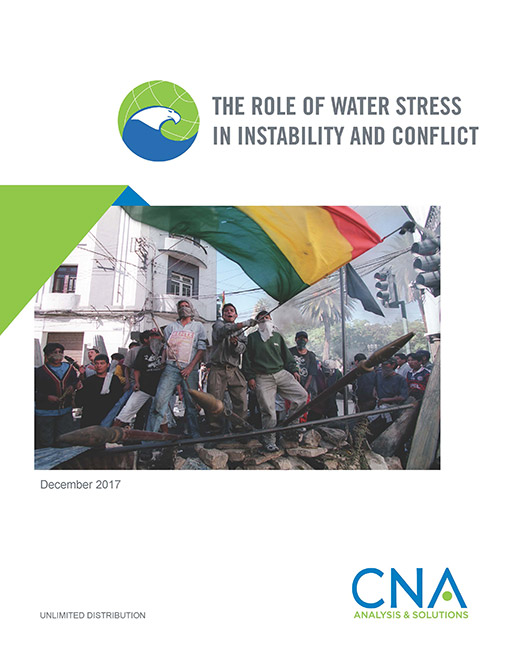Water is a necessary and vital resource for all life on earth. Clean fresh water is necessary to sustain our bodies, to grow our food, for much of our energy production or use. It is critical to sanitation, hygiene, and our ability to prevent the spread of disease. Fresh water is so vital to the human condition, conventional wisdom holds that populations would be willing to go to war to ensure supplies. In 2007, CNA’s Military Advisory Board (MAB) identified that, “access to vital resources, primarily food and water, can be an additional causative factor of conflicts” [1]. In 2012, the U.S. National Intelligence Community went further and assessed that "... during the next 10 years, water problems will contribute to instability in states important to U.S. national security interests”. Since those assessments, the world has seen hundreds of thousands die fighting and millions migrate out of drought-stricken Syria; ongoing civil wars in water-scarce Yemen and Libya; on-going tensions between the nuclear-armed countries of India and Pakistan, which share water resources; and violent extremist organizations (VEOs) including ISIS, Al-Shabaab, and Boko Haram using water as a tool of coercion or influence, from Africa to the Levant. These and countless other examples give credence to the belief that water and conflict are related.On the other hand, in a review of state-on-state wars, none can be directly and solely attributed to fighting over water resources. Understanding more fully how water stress contributes to violence, conflict, and instability—while historically falling short of causing war—can help decision makers allocate resources to prevent or dampen conflict in critical areas to safeguard U.S. interests and national security.To begin this understanding, we examined numerous recent examples of violence in water-stressed areas across a conflict spectrum—civil unrest and instability; localized violence; terrorism, insurgencies, and civil wars; and state-on-state conflict. We found that water stress has varying roles in conflict that rarely occur linearly. Prominent in nearly all cases is the role of government and other organizations, like VEOs, which could exert control of or otherwise manage water resources. We found that water management, or the lack thereof, was a dominant factor not only in the availability of water, but also in the trust, confidence, and support that populations have for the organizations exerting control. As water stress is predicted to expand to new areas and intensify in those already stressed, it is likely to become a more prominent non-traditional security challenge. Driving factors include population growth, demographic shifts, and the emerging effects of a changing climate. Understanding the relationship between water stress and conflict will become increasingly important to protect U.S. interests and national security. Our full findings and recommendations follow.
Download reportUnlimited Distribution
Details
- Pages: 70
- Document Number: CRM-2017-U-016532. Final.
- Publication Date: 12/1/2017
